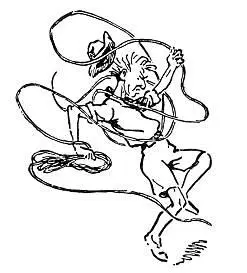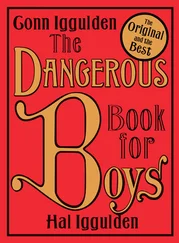Robert Robert - Scouting for Boys
Здесь есть возможность читать онлайн «Robert Robert - Scouting for Boys» весь текст электронной книги совершенно бесплатно (целиком полную версию без сокращений). В некоторых случаях можно слушать аудио, скачать через торрент в формате fb2 и присутствует краткое содержание. Жанр: Старинная литература, und. Описание произведения, (предисловие) а так же отзывы посетителей доступны на портале библиотеки ЛибКат.
- Название:Scouting for Boys
- Автор:
- Жанр:
- Год:неизвестен
- ISBN:нет данных
- Рейтинг книги:3 / 5. Голосов: 1
-
Избранное:Добавить в избранное
- Отзывы:
-
Ваша оценка:
- 60
- 1
- 2
- 3
- 4
- 5
Scouting for Boys: краткое содержание, описание и аннотация
Предлагаем к чтению аннотацию, описание, краткое содержание или предисловие (зависит от того, что написал сам автор книги «Scouting for Boys»). Если вы не нашли необходимую информацию о книге — напишите в комментариях, мы постараемся отыскать её.
Scouting for Boys — читать онлайн бесплатно полную книгу (весь текст) целиком
Ниже представлен текст книги, разбитый по страницам. Система сохранения места последней прочитанной страницы, позволяет с удобством читать онлайн бесплатно книгу «Scouting for Boys», без необходимости каждый раз заново искать на чём Вы остановились. Поставьте закладку, и сможете в любой момент перейти на страницу, на которой закончили чтение.
Интервал:
Закладка:
When you find an insensible person (in his fright he may have hidden himself under a bed or table), you should either carry him out on your shoulder, or, what is often more practicable in the case of heavy smoke or gas fumes, harness yourself on to him with sheets or cords and drag him out of the room along the floor, crawling on all fours yourself.
To do this you make a bowline at each end of your rope; one you put over the patient’s chest and under his arms, and the other over your own neck. Then with your back to his head you start on all fours to pull him along head first. If the bowline is the right length it will keep his head up off the ground.
Rescue from Drowning
The list of Boy Scout heroes shows you what a large proportion of accidents are due to not knowing how to swim. It is therefore most important that everybody should learn to swim, and, having done so, to learn how to save others from drowning.
A moderate swimmer can save a drowning man if he knows how, and has practised it a few times with his friends.
The popular idea that a drowning person rises three times before he finally sinks is all nonsense. He may drown at once, unless someone is quick to help him.
The important point is not to let the drowning person catch hold of you when you get to him, or he may drown you too. Keep behind him always.
Put an arm across his chest and your hand under his armpit, telling him to keep quiet and not to struggle. If he obeys, you can easily keep him afloat. But otherwise be careful that in his terror he does not turn over and catch hold of you. If he should seize you by the neck, place your arm round his waist, and the other hand, palm upwards, under his chin, with your finger-tips under his nose. Pull and push, and he must let go. If you find yourself clutched by the wrist, turn your wrist against his thumb and force yourself free.
But you will never remember this unless you practice it frequently with other boys first, each taking turns in being the drowning man or the rescuer.
Any of you who cannot swim as yet, and who fall into the water out of your depth, remember that you need not sink if you take care to do the following things: First, keep your mouth upwards by throwing the head well back. Secondly, keep your lungs full of
air by taking in long breaths, but breathe out very little. Thirdly, keep your arms under water. To do this you should not begin to shout, which will only empty your lungs, and you should not throw your arms about or beckon for help, because this will make you sink.

To rescue someone fallen through the ice, push a ladder to him.
If you see a person fall into the water and begin to drown, and you yourself are unable to swim, throw a rope, or an oar or plank right to him, so that he may clutch at it and hold it. If a person falls through ice, and is unable to get out again because of the edges breaking, throw him a rope and tell him not to struggle. This may give him confidence until you can get a long ladder or pole across the hole, which will enable him to crawl out, or will allow you to crawl out to catch hold of him.
Throwing a Life Line
It is often much more use to be able to throw a rope within the reach of a drowning person than to jump in after him and make two to be pulled out.
A good length for a throwing or heaving line is 7 fathoms (42 feet). If you are making up a special throwing line, it should be of nice pliable braided or stranded rope about 1/4 in. in diameter. For long throws it’s usually the practice to make a heavy knot in the throwing end; sometimes a small sandbag is fastened to the end to make it carry farther. But mind that you aim the weight to fall across the recipient’s outstretched arms, and not at his face.
Now decide which hand is going to do the throwing. Most people naturally use their right. On that hand coil up your throwing line very carefully, clockwise, making the coils, say, 18 ins, from top to bottom. When about half is coiled on, turn up a finger to separate those coils and coil the rest on to the remaining fingers of your hand.
When you come to the end of the rope, hold it firmly in your left hand with the last three fingers, or, better, have a loop in the end that will fit down over your wrist so you don’t lose the end in throwing. Then pass back the second set of coils from your right to the first two fingers of your left hand. Now you have a coil in each hand.

It takes practice to learn to throw a life line correctly, so that you do not get yourself snarled up in it.
The right-hand coil is the one you throw first, and you follow it instantly with the left coil, not letting go the end. Thrown out like this, the line won’t tangle up, and it’s possible to throw the whole line out straight, so that it will reach the farthest. Sending it out in one coil nearly always results in the coil not opening properly, and a short reach in consequence.
Throwing can be underhand or overhand. The latter is better exercise and almost essential if the line has to be thrown from behind an obstruction, such as a bulwark or wall, or has to be thrown to people in an upper storey in case of fire.
Rescue from Runaway Horses
Accidents sometimes occur from runaway homes running down people. It is well that everybody should know how to stop a runaway horse, and thus to prevent injuries.
The way to stop a runaway horse is not to run out in front of it and wave your arms, as so many people do. Instead race alongside it, catch hold of the shaft to keep yourself from falling, seize the reins with the other hand and drag the horse’s head round toward you, turning the horse until you can bring it up against a wall or house, or otherwise compel it to stop. But, of course, for a boy, with his light weight, this is a very difficult thing to do. The share he would have in such an accident would probably be to look after the people injured by the runaway horse.
Miscellaneous Accidents
One cannot go through the whole list of accidents that might come to your notice, but the point is that a Scout should always remember to keep his head, and think what is the right thing to do at the moment, and be the man to do it, even under the most unexpected circumstances.
Scout J. C. Davel, 1st Bloemfontein Troop (South Africa), saw a little girl entangled in some electric-light wires on the roof of a house. Although he was warned not to go to her, as he might be killed too, he climbed up and got her down. Unfortunately, the child was dead.
Scout Lockley, 1st Atherstone Troop, was at a fair looking on at a roundabout (merry-go- round) which was being worked by electricity from a steam engine. The driver of the engine in leaning over got his clothes caught in the machinery, and was being dragged into it when Lockley sprang on to the engine, and, knowing something of mechanics, pulled over the lever, and stopped it just in time to save the man’s life.
There is an example of a fellow Being Prepared, knowing what to do, and doing it without a moment’s waiting.
PATROL PRACTICES IN LIFE SAVING
Practise forming a “fence” with staffs, for keeping back a crowd. This can be made a game by dividing the Troop into “crowd” and “Scouts”.
Instruct Scouts to know the position of neighborhood fire plugs and hydrants, police points, fire alarms, fire stations, ambulances, hospitals, etc.
Practise tying bowline in rope and dragging insensible person.
Читать дальшеИнтервал:
Закладка:
Похожие книги на «Scouting for Boys»
Представляем Вашему вниманию похожие книги на «Scouting for Boys» списком для выбора. Мы отобрали схожую по названию и смыслу литературу в надежде предоставить читателям больше вариантов отыскать новые, интересные, ещё непрочитанные произведения.
Обсуждение, отзывы о книге «Scouting for Boys» и просто собственные мнения читателей. Оставьте ваши комментарии, напишите, что Вы думаете о произведении, его смысле или главных героях. Укажите что конкретно понравилось, а что нет, и почему Вы так считаете.

![Роберт Баден-Пауэлл - Искусство скаута-разведчика[Scouting for boys ; Искусство Разведки для мальчиков]](/books/70572/robert-baden-pauell-iskusstvo-skauta-thumb.webp)









